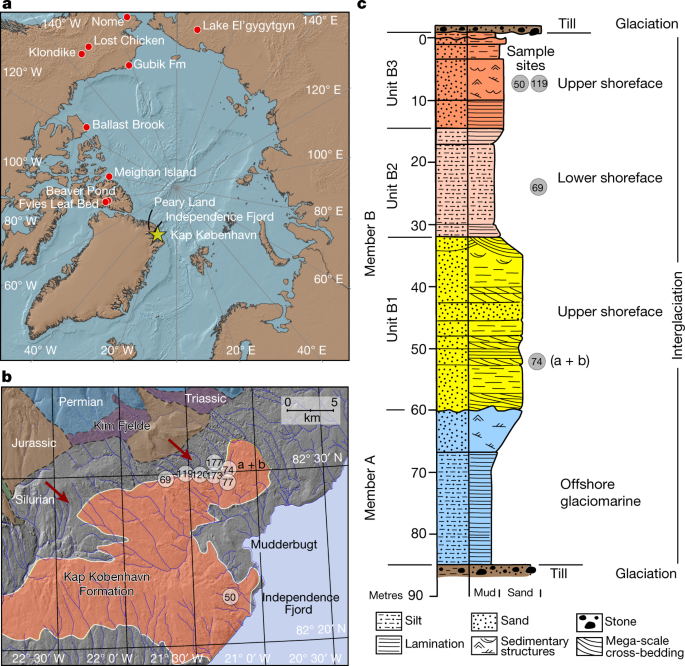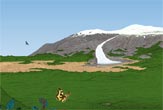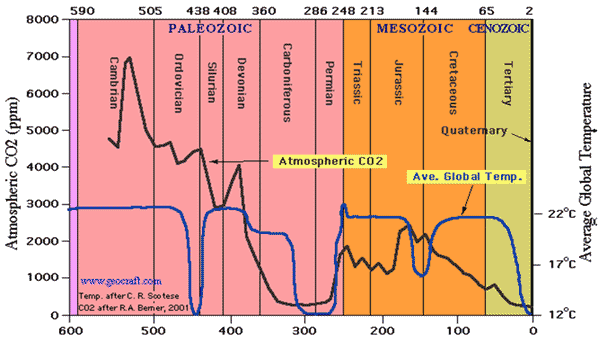Perhaps a look at "climate" over long stretches of time may help.
Especially those Ice Ages.
Selected excerpts (note part of this link has text genuflecting to the religion of ACC/AGW.
...
Ice Ages – What Are They And What Causes Them?
...
An ice age is a long interval of time (millions to tens of millions of years) when global temperatures are relatively cold and large areas of the Earth are covered by continental ice sheets and alpine glaciers. Within an ice age are multiple shorter-term periods of warmer temperatures when glaciers retreat (called interglacials or interglacial cycles) and colder temperatures when glaciers advance (called glacials or glacial cycles).
At least five major ice ages have occurred throughout Earth’s history: the earliest was over 2 billion years ago, and the most recent one began approximately 3 million years ago and continues today (yes, we live in an ice age!). Currently, we are in a warm interglacial that began about 11,000 years ago. The last period of glaciation, which is often informally called the “Ice Age,” peaked about 20,000 years ago. At that time, the world was on average probably about 10°F (5°C) colder than today, and locally as much as 40°F (22°C) colder.
...
One significant trigger in initiating ice ages is the changing positions of Earth’s ever-moving continents, which affect ocean and atmospheric circulation patterns. When plate-tectonic movement causes continents to be arranged such that warm water flow from the equator to the poles is blocked or reduced, ice sheets may arise and set another ice age in motion. Today’s ice age most likely began when the land bridge between North and South America (Isthmus of Panama) formed and ended the exchange of tropical water between the Atlantic and Pacific Oceans, significantly altering ocean currents.
Glacials and interglacials occur in fairly regular repeated cycles. The timing is governed to a large degree by predictable cyclic changes in Earth’s orbit, which affect the amount of sunlight reaching different parts of Earth’s surface. The three orbital variations are: (1) changes in Earth’s orbit around the Sun (eccentricity), (2) shifts in the tilt of Earth’s axis (obliquity), and (3) the wobbling motion of Earth’s axis (precession).
...
Records show that ice ages typically develop slowly, whereas they end more abruptly. Glacials and interglacials within an ice age display this same trend.
On a shorter time scale, global temperatures fluctuate often and rapidly. Various records reveal numerous large, widespread, abrupt climate changes over the past 100,000 years. One of the more recent intriguing findings is the remarkable speed of these changes. Within the incredibly short time span (by geologic standards) of only a few decades or even a few years, global temperatures have fluctuated by as much as 15°F (8°C) or more. For example, as Earth was emerging out of the last glacial cycle, the warming trend was interrupted 12,800 years ago when temperatures dropped dramatically in only several decades. A mere 1,300 years later, temperatures locally spiked as much as 20°F (11°C) within just several years. Sudden changes like this occurred at least 24 times during the past 100,000 years. In a relative sense, we are in a time of unusually stable temperatures today—how long will it last?
...
An ice age is a long interval of time (millions to tens of millions of years) when global temperatures are relatively cold and large areas of the Earth are covered by continental ice sheets and alpine glaciers. Within an ice age are multiple shorter-term periods of warmer temperatures when...
geology.utah.gov
Below are two charts included in the article;
Now compare these with this one of CO2 and temperature levels;
And this one;
Throughout most of the history shown in the above two, CO2 and temperature levels have been substantially higher than at present.
When we track such over past 40 or 150, or 200+ years we are looking a minute place on the above scales and what appears to be an anomalous situation only within that short perspective. Compared to most of the history in these graphs, Earth has been colder for most of the time.


 I never claimed that the sun froze Greenland, you fucking clueless moron.
I never claimed that the sun froze Greenland, you fucking clueless moron.







